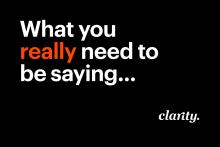

If asked, most corporate teams would consider themselves to be under resourced. Communications teams are no different, and in our experience are almost always expected to do more with less.
However, it’s one thing to believe you are under resourced, but how do you go about proving it and making the case for change.
1. Understand the demand for Communications
Before asking for more resources, it's important to assess what’s driving the demand for communication across your organisation.
Start with the basics: How many employees do you need to reach? How complex is your stakeholder landscape? Are there major change initiatives, restructures or industry shifts that will create additional work for your team? There is often a public crisis looming on the horizon – is your team fully equipped for this?
What does history tell you? Why is it that (for example) September and February always your busiest months? Invest the time to understand the key factors contributing to your team’s workload throughout the year.
A high-level review of what’s happening now and what’s coming can help frame a meaningful discussion about priorities, gaps, expectations and commitments.
2. Structure the team to match the needs
There’s no perfect structure and it should always be seen as a work-in-progress. Communications is a discipline that never stops changing. In recent history, consider the changes brought about by social media, Canva, AI etc. to name a few well-known disruptors.
Due to this rate of constant change, the structure that worked last year may not work this year. Perhaps you’re predicting greater demand for visual storytelling, brand strategy, internal engagement, leadership communications or crisis response techniques.
Leaders need to regularly rethink roles and ways of working, and to stay across external trends.
Importantly, communications should be seen as a strategic function. That means having influence with senior leaders, ideally with direct or dotted-line access to the CEO. It also means involving communications early in business decisions, so the team can help shape not just what needs to be said, but to properly explain the why.
Talk to your team. They’ll often know where the skill gaps or inefficiencies are. Then look at how other organisations are adapting and consider where you might need to evolve.
3. Measure and refine
Once the desired structure is in place, the next step is understanding whether it’s working. Start small by reviewing how effective your existing channels are. Survey key stakeholders to learn how they experience communication, and what could improve that experience.
The real value of communications lies in its ability to support strategy. Can you draw a clear line between your team's work and the delivery of key business goals? If say your strategy is focused on growth, can communications demonstrate how it’s building awareness or preparing internal teams for change to support this?
Resourcing is about more than just headcount. It’s about understanding your current and future workload, structuring your team accordingly, and regularly reviewing what’s working.
It’s also not just about volume of tasks complete. High-performing communications teams build trust, shape culture and reputation, and connect people to purpose.














